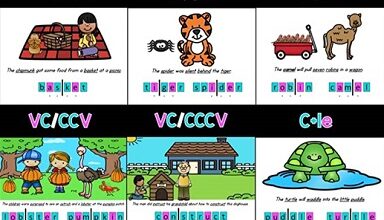Free morpheme examples/definition/other types of morpheme
Morpheme
Before establishing and knowing what an independent morpheme is, let’s see what a morpheme is since independence is only a typology of this particular unit. We understand by morpheme an independent moneme, that is, the minimum fragment that is capable of expressing meaning, and that, if it is attached to a lexeme, modifies the definition. Free morpheme examples
In this video we will discover what the structure of the words is, talking about morphemes and lexemes so that you can better understand this lesson.
What is an independent/free morpheme? Free morpheme examples
Now that we know what a morpheme is, it’s time to find out what a particular independent morpheme is. An independent morpheme, which is also known as free or clitic, is a morpheme that does not need the union of any lexeme since it forms by itself a word with its own meaning.
A free morpheme is a morpheme (or word element) that can stand alone as a word. It is also called unrelated morpheme or free-standing morpheme. A free morpheme is the opposite of a linked morpheme, an element of a word that cannot stand alone as a word.
Many words in English are composed of one free morpheme. For example, each word in the next sentence represents a separate morpheme: “I need to leave, but you can stay.” In other words, none of the nine words in this sentence can be broken down into smaller parts that also matter. There are two main types of free morphemes: content words and service words. Free morpheme examples
In addition, in them we find two basic qualities or properties that are necessary to know to understand their meaning:
1. Independent morphemes always admit an insertion between themselves and the lexemes of any other morpheme. Free morpheme examples
2. We understand that the independent morphemes are:
- Prepositions: before, to, with, from, in …
- Determinants: she, he, that, one, one …
- Pronouns: he, she, di-le …
- Conjunctions: although, but, and, and …
Examples of the use of the independent/free morpheme
Let’s see in an example how we extract the independent morphemes, so you will be perfectly clear what they consist of:
“A simple word consists of one morpheme, like a free morpheme, a morpheme with the potential for independent occurrence. The farmer kills a duckling free morphemes in, farm, killing, and a duck. It is important to note here that (in this sentence) not all of these free morphemes are words in the sense of minimal free forms – the truss and the duck are exemplary cases. ”
“The man has taken a car for a walk”
Let’s look at other examples so you can practice:
“The boy is throwing stones out the window”
Here we can only extract three, which are the, by, the.
“They are very happy in the morning”
In this case, we extract a total of four: they, very, by, the.
We can see that it is quite easy to differentiate this type of morphemes from the others.
Other types of morphemes Free morpheme examples
Now, as we have already commented, the independents are not the only ones that we find in our language. Actually, there are other kinds of morphemes, as we see below:
- Dependent/bound morphemes: also known as bound, they join other monemes to complete the meaning. In this way, there are cases in which they end up causing changes in stress or phonetics. They only appear in a very specific sequential order and the interposition of other elements between the root and them is not allowed.
- Inflectional morpheme: another type of dependent morpheme that is constitutive. That is, it marks a grammatical relationship. In general, it does not usually involve a change in basic meaning, and it is usual that it goes with the interleaving of other basic lexemes or even derivative morphemes. He is known as the person in charge of marking gender and number in name and adjective and grammatical time, person, mode, or number in the verb. In this other lesson we will discover the differences between inflectional and derivative morpheme. Free morpheme examples
- Derivative morphemes: it is a type of dependent morpheme that is known as facultative since it adds nuances to the meaning of a lexeme. In this way, it acts in various semantic fields and is close to the root.
In addition, derivative morphemes are classified into:


